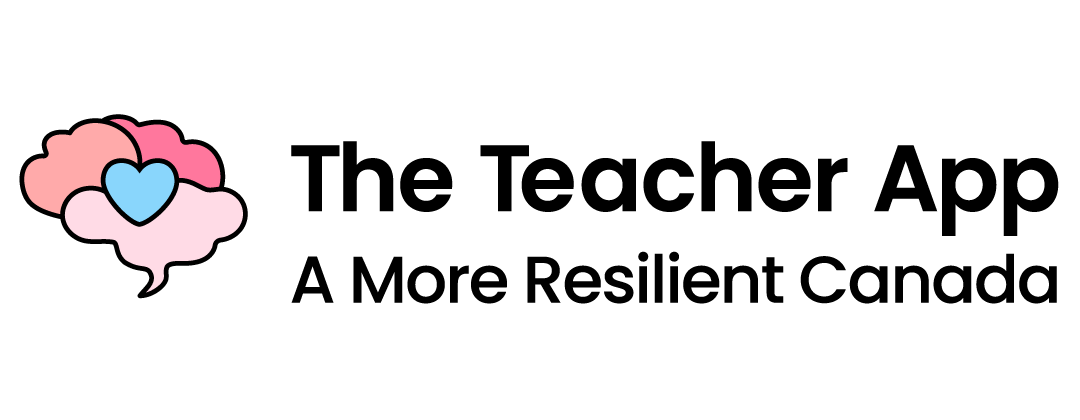Our amazing featured writer Gabriel Gioia is holding space this month with an advice piece on what he wishes teachers knew about students struggling with their mental health. This is wonderful insider-perspective on how to best support your students.
Gabriel is a high school student in Montreal, Québec graduating this year (we’re so proud of him!) He’s passionate about mental health, psychology and learning. “I aspire to become a practicing psychologist and in my free time you’d find me reading, writing and learning. When I discovered the Teacher’s App, I knew right away I wanted to contribute and make mental health more accessible to teachers, a service crucial for the wellness of teachers and the education system as a whole.”
If you haven’t read his first piece he submitted to TAPP, find it here. We’re so lucky to have you contributing to the conversation here today!
Check out his recent piece in video-form here: https://youtu.be/8Y43K_KWDdU
If you’ve forgotten your headphones today, and you’d like to read it instead, here’s the article below:
***
I remember sitting in my physics classroom with the teacher going over Newton’s laws as she occasionally glanced at a student behind me with a worried expression on her face. I seemed to be the only one who noticed and when the time permitted, I peeked back too to see my peer’s despondent look. They were clearly struggling, but there was nothing I could’ve done. I wasn’t close to them and was in no position to help them out. The bell then rang and I went home that day thinking:
“How can the teacher help in that situation?”
After thinking about this question for a while, with some research, I’ve come up with a simple answer which I’ll share with you today.
The right place and time
Firstly, I think it’s important that you talk to the student when they’re listening and have your full attention. This means talking to them outside of regular class time, where both of you won’t receive any interruptions or have to rush to get somewhere. During class it’s not a good idea to address them directly as people are reluctant to be judged by their peers about their struggles and this causes them to keep quiet. The best thing you can do during class for them is not pick them to answer questions. Until then, wait until class is over to then plan a time that day to talk to them.
For example, let’s say we’re in a highschool during the first period and a teacher sees a student struggling. The best course of action would be waiting until the end of class and then asking them a convenient time to talk to then ask something similar to the following:
“Jerome, can I see you at the beginning of lunch in my classroom?”
You don’t have to mention the reason if other students are leaving class, but assure that they’ll have time to speak to you if they decide to open up and plan that you’ll have at least 30 minutes to talk to them so you don’t have to go as they open up. This may be misinterpreted as a lack of care and unintentionally worsen their mental state. The reason for talking to them in private is to allow a safe space where the student is more inclined to open up and to show them that you truly care, having noticed their struggle in class.
The Right Words
Now that the student is with you comes the tricky part. How do you bring it up? I like to use this simple three step process.
- Validate
You acknowledge how they’re feeling and confirm that it’s okay for them to feel that way. A validation goes a long way for them due to this as it confirms that their struggle is real and that someone saw the pain it was causing them. It also helps them regulate their emotions based on a 2015 study from the American Psychological Association and gives a soothing effect on them as they feel deeply understood.
- Offer support
Simply saying that you’re open to listen and support them if needed helps the students greatly. It gives them a person that they know they can turn to if needed and reminds them that they are not alone to face their emotional struggle.
- Listen
Now you can’t force them to open up, but if they do then you’d want to listen. This means maintaining eye contact, not crossing your arms or legs and focusing on them, not getting distracted by anything else. Try not to interrupt them or jump to conclusions and spot non verbal cues if there are any.
Let’s continue from the previous example. Let’s say Jerome is in your classroom now at lunch. You would tell him something similar to this:
“Hey, I noticed that you were feeling down today. Is everything okay? I’m open to talk if you ever need it.”
Here we can see that they validated Jerome’s feeling by explicitly mentioning it and then gave support by simply offering to talk. Support doesn’t have to be anything complicated, as long as there’s compassion in it is what matters.
On a final note, it’s highly important that you only offer support when you can and that you prioritise taking care of yourself first. If you aren’t well yourself, then it will be very hard to support others, especially that it can be very draining. You could possibly worsen the situation if you’re not careful. Try a warm bath, calling a friend you haven’t chatted with in a while or taking a walk outside are a few ways to take care of yourself. However, if you are feeling great, then you’ll know exactly what to do next time a student is struggling.
